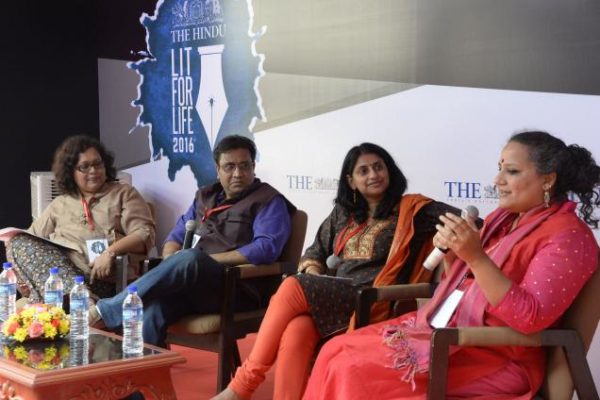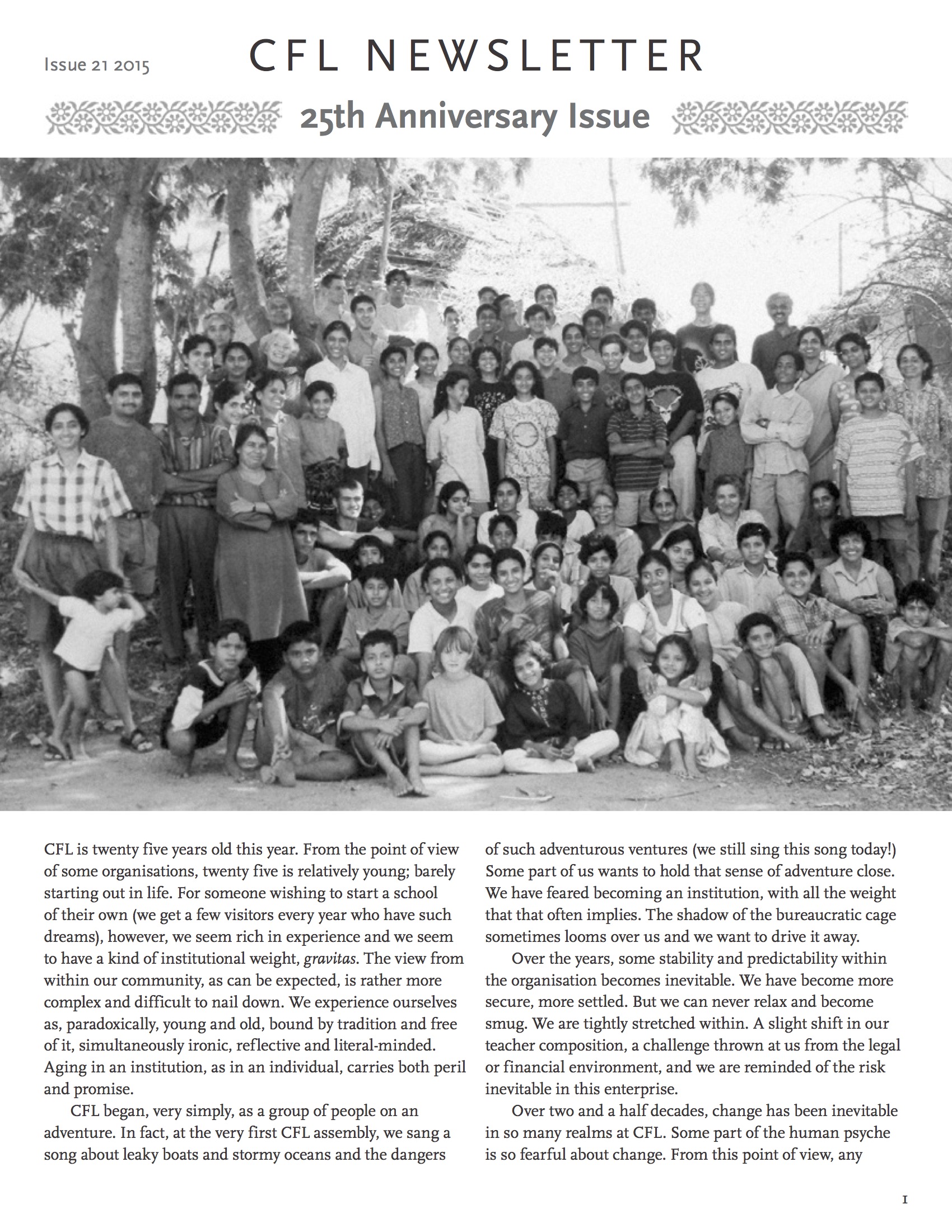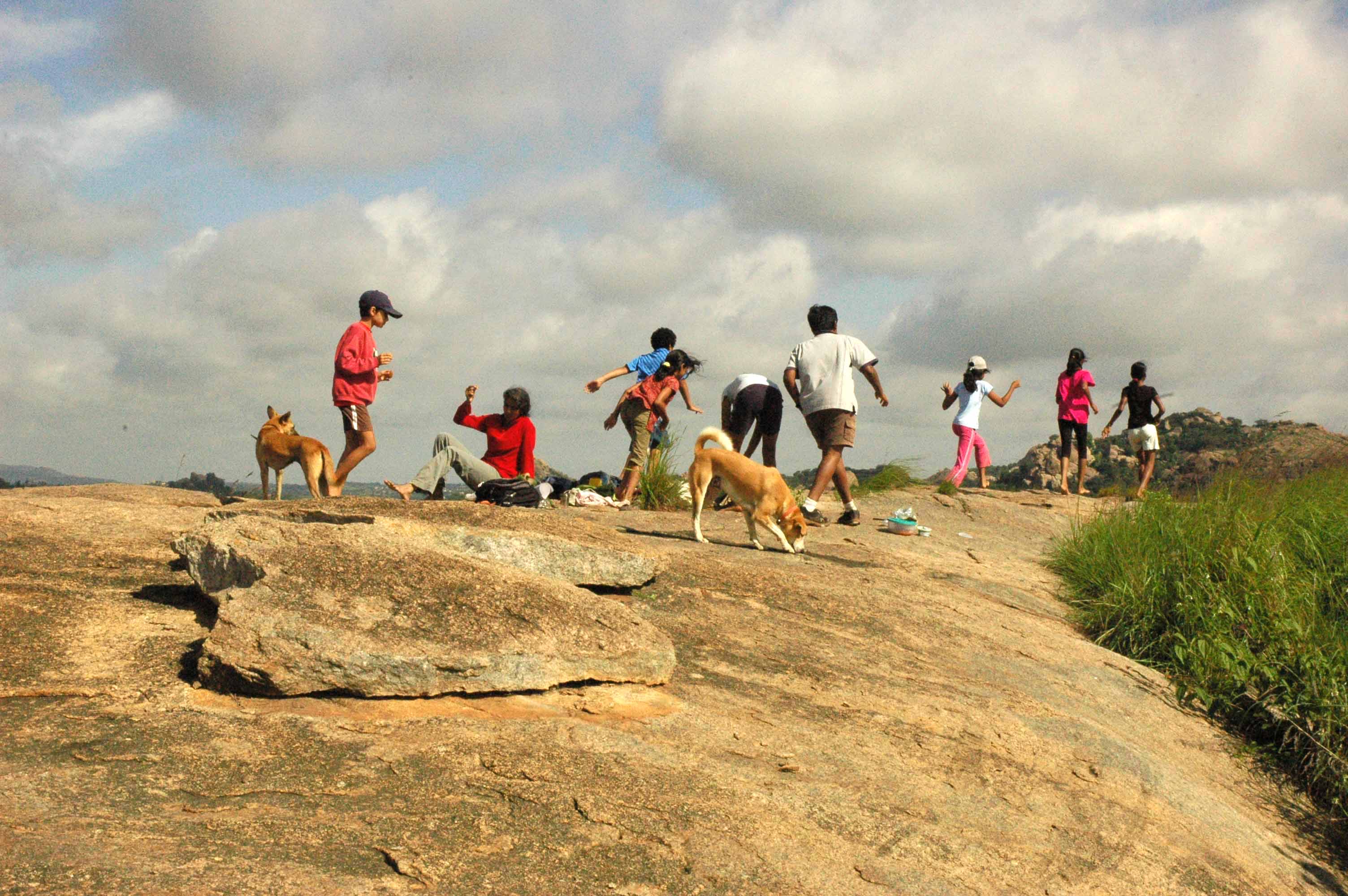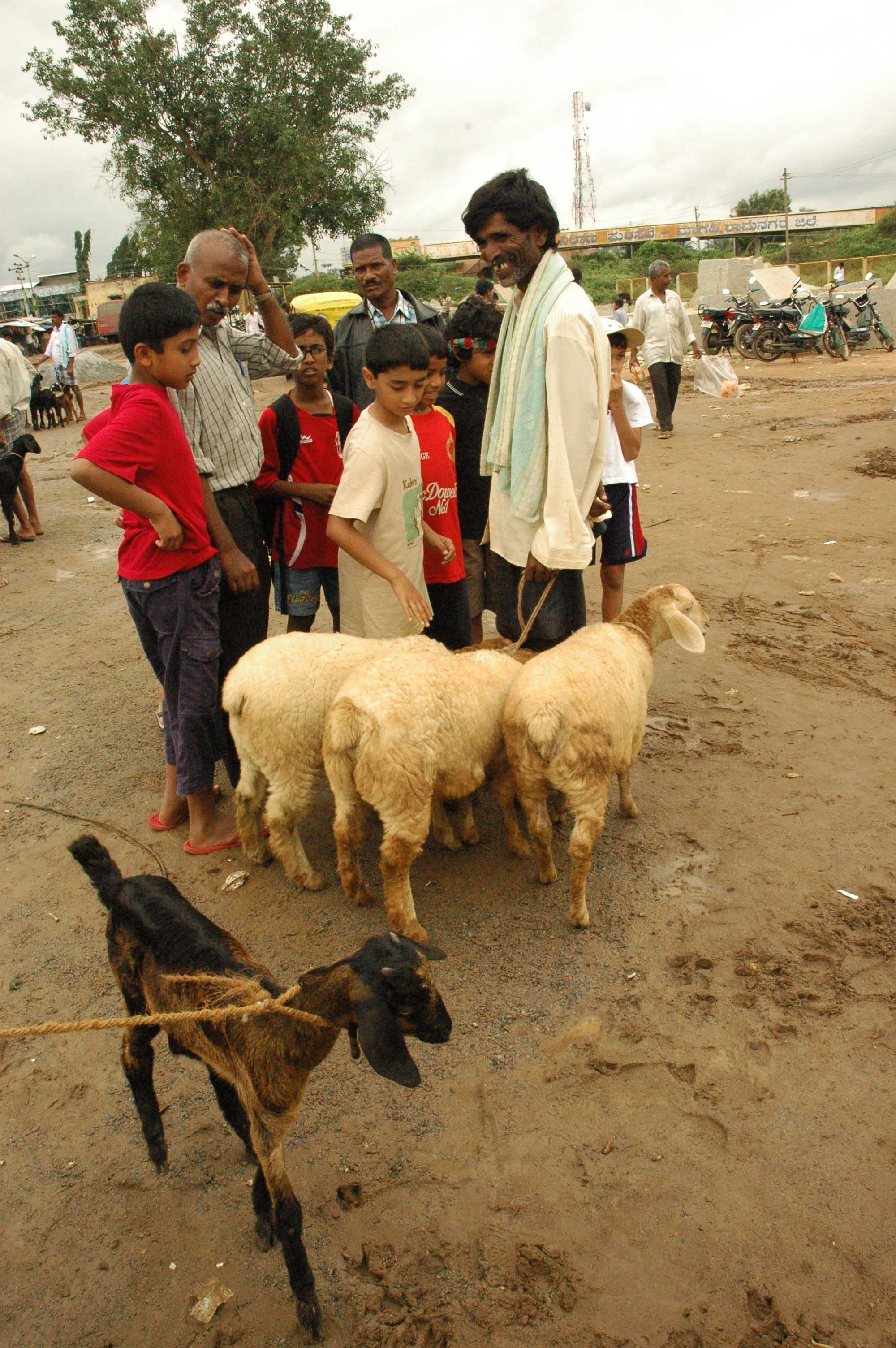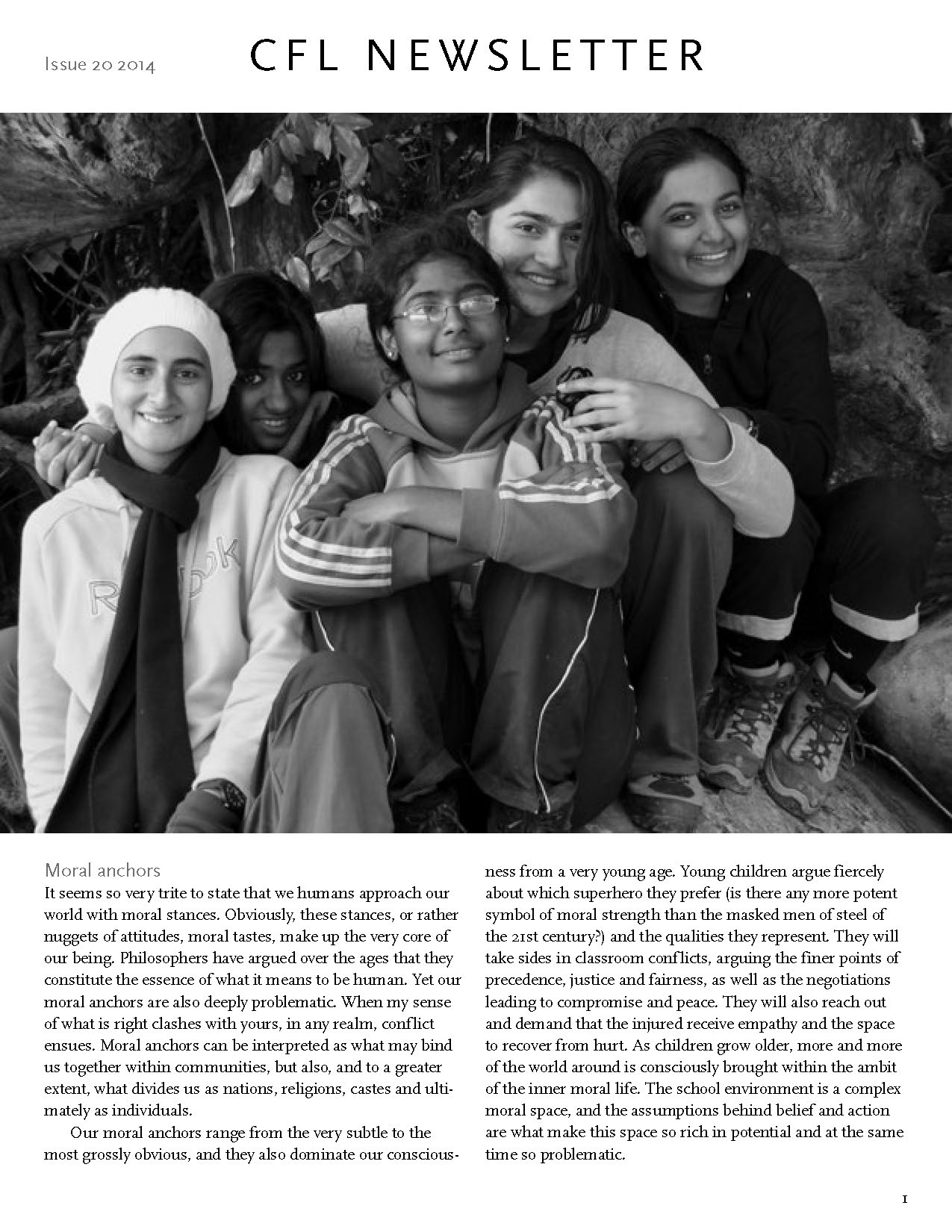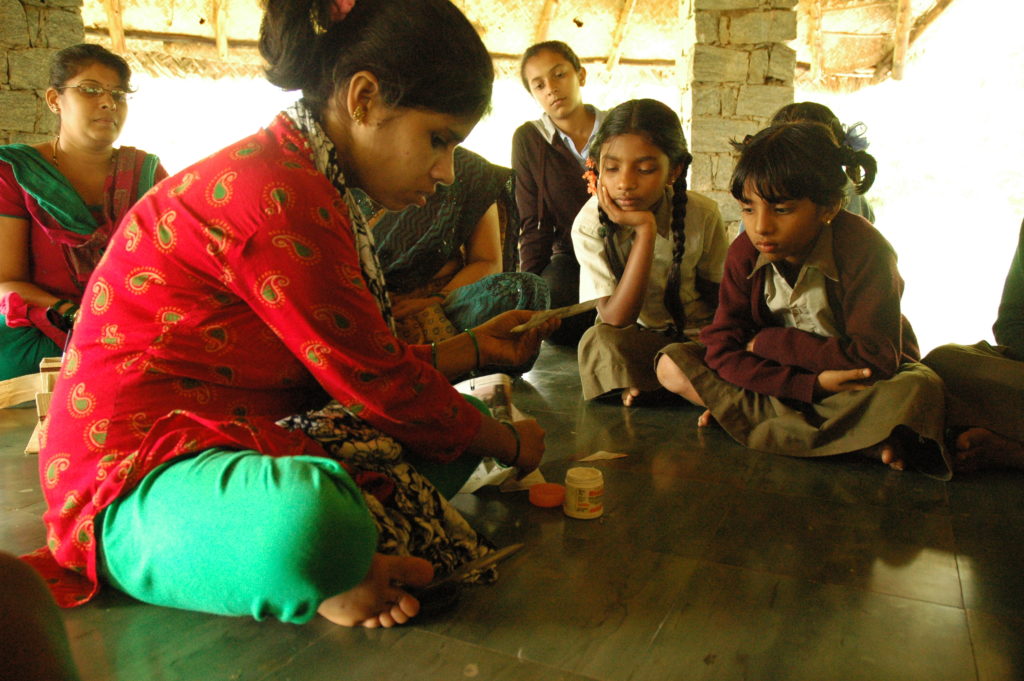The Hindu Young World-Goodbooks Awards 2016 announced
http://www.thehindu.com/features/lit-for-life/the-hindu-young-worldgoodbooks-awards-2016-announced/article8112609.ece
The Hindu Young World Goodbook awardees (from left) Sujatha Padmanabhan, Prabha Mallya, Venita Coelho and Vishakka Chanchani at the Lit For Life Festival. Photo: R. Ragu
The Hindu Young World-Goodbooks Awards 2016, the first Indian awards to promote excellence in Indian children’s books, were presented here on Friday.
Sujatha Padmanabhan received the best picture book- story award for ‘Bumboo…The Donkey who would not budge’, published by Eklavya, 2015.
In the citation, the jury comprising Usha Mukunda, Sujata Noronha, Amruta Patil, Aashti Mudnani said: “An endearing story of a little donkey, living with a loving family high in the mountains of Ladakh. The relationship between the young girl and the donkey is delineated with sensitivity. Bumboo has an engaging storyline that manages to keep the suspense alive. For the reader, there is a slow but sure connection with the characters and personalities.”
Prabha Mallya bagged the award for the best picture book-illustrations for ‘The alphabet of animals and birds’ published by Red Turtle, 2014. In the citation, the jury said: “In describing collective nouns, the premise of the alphabet of animals and birds, Prabha Mallya notes that they exist not for utilitarian reasons, but to bring nuance, metaphor and imagination to language. Such quirky delights find kindred spirit in Prabha Mallya.”
Venita Coelho received the award for the best book- fiction for ‘Dead as a Dodo,’ published by Hachette, 2015. “A smart, witty, fast-paced novel about saving the Earth and animals from the reckless greed of human beings,” said the jury comprising Manjula Padmanabhan, Jai Arjun Singh and Anil Menon in the citation.
Vishakha Chanchani emerged the winner in the best book-non-fiction category for ‘The house that Sonabai built,’ published by Tulika, 2014. The book is about a remarkable woman who began experimenting with clay to create toys for her little son. “A heart warming and significant book about life, art and above all hope,” the citation read.
Goodbooks, a website for Indian children’s books, is supported by Wipro Applying Thought in Schools, Wipro’s social initiative in education.

